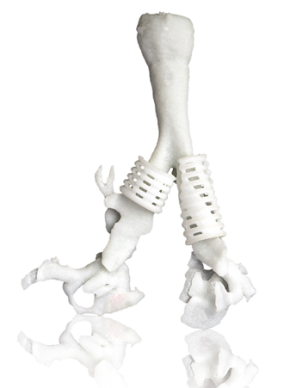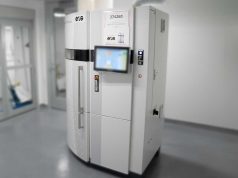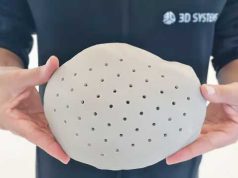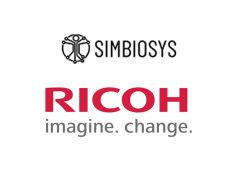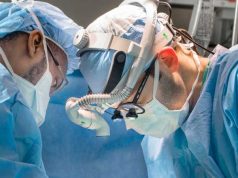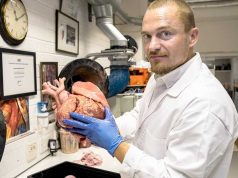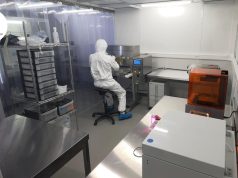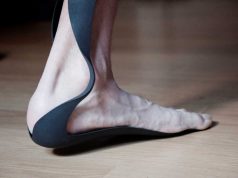We have already reported on the work of the University of Michigan, where a team of researchers has created 3D printed airways splints for children suffering from tracheobronchomalasia (TBM), a life-treatening condition leading to the collapse of airways if not treated. So far, five children have received these novel 3D printed tracheal splints.
Based on CT scan data, a 3D model of the patient’s airways is created, that serves then as a base for the 3D design of the custom splint. The splints, 3D printed via EOS selective laser sintering technology, are made out of polycaprolactone (PCL), a biodegradable polyester that resorbs over time.
Placed on the outside of the airway, the splints helps to hold them open and therefor allow the patients to breath normally. Further, due to the design and material that becomes more flexible over time, the splints expand as the children develop and finally resorb, so no additional surgery for removal is required.
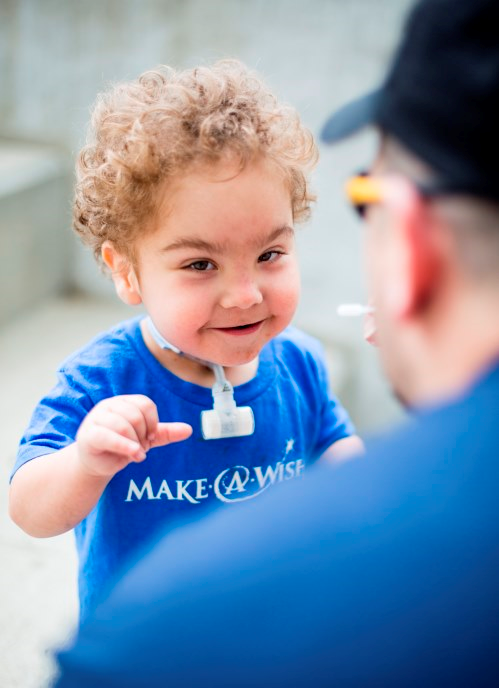
Dr. Hollister, professor of biomedical engineering at the University of Michigan explains: “It’s now pretty automatic to generate an individualized splint design and print it; the whole process only takes about two days now instead of three to five.”
The custom splints are printed on the FORMIGA P 100 system, that has been purchased by the University back in 2006. “I chose EOS because we were looking for a system that was flexible and allowed us to change parameter settings like laser power, speed, powder-bed temperature, and so on, which we needed to do to customize our builds,” said Dr. Hollister. “Also, because biomaterials can be expensive and implants and scaffolds are typically not so big, we wanted a more limited build volume that didn’t use a lot of material. The FORMIGA P 100 fitted the bill for both of these requirements.”
EOS also helped the team on site in their laboratory and advised them on how best to prepare the material for production. While the company offers a wide variety of proprietary plastic and metal materials, the use of PCL was a first in this case.
Dr. Hollister’s team is currently also developing craniofacial, spine, long bone, ear and nose scaffolds and implants using EOS 3D printing technology. He adds: “If we can expand the number of biomaterials used in Additive Manufacturing, we can tackle a tremendous number of problems in all fields of reconstructive surgery and make enormous strides for the benefit of patients.”
Subscribe to our Newsletter
3DPResso is a weekly newsletter that links to the most exciting global stories from the 3D printing and additive manufacturing industry.



